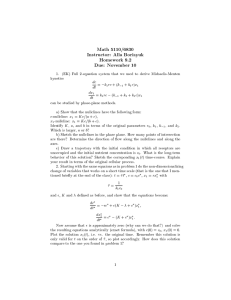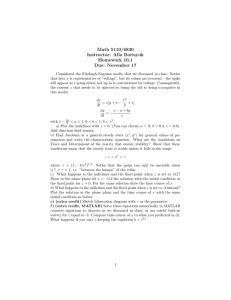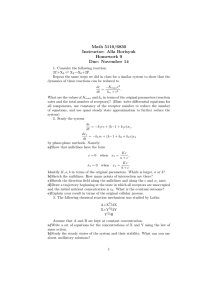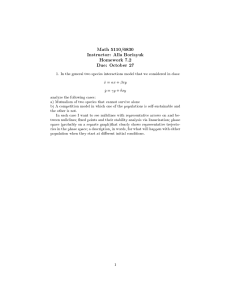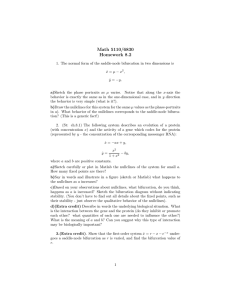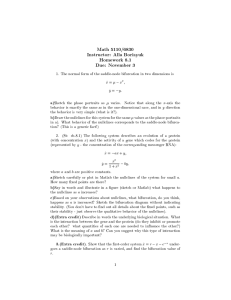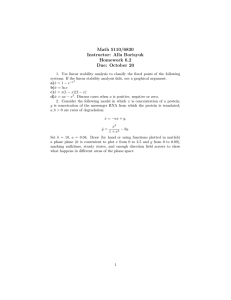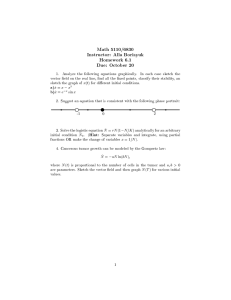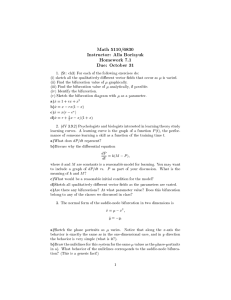MATH 3900, Spring 2009 Homework 5 Due 02/20/09
advertisement
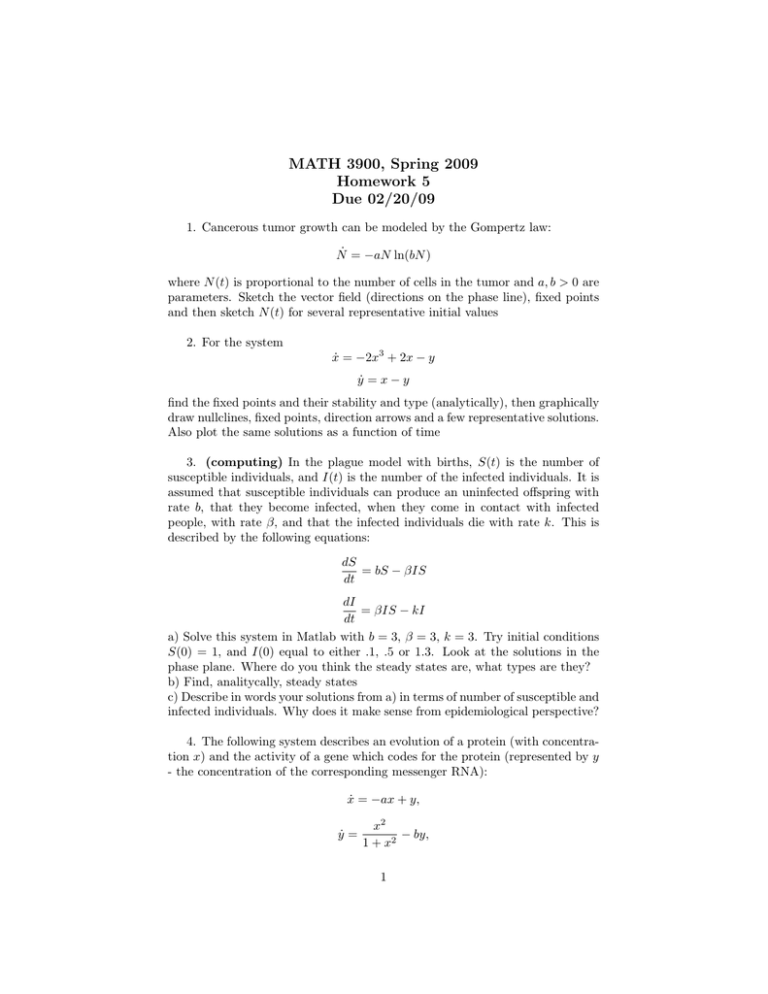
MATH 3900, Spring 2009 Homework 5 Due 02/20/09 1. Cancerous tumor growth can be modeled by the Gompertz law: Ṅ = −aN ln(bN ) where N (t) is proportional to the number of cells in the tumor and a, b > 0 are parameters. Sketch the vector field (directions on the phase line), fixed points and then sketch N (t) for several representative initial values 2. For the system ẋ = −2x3 + 2x − y ẏ = x − y find the fixed points and their stability and type (analytically), then graphically draw nullclines, fixed points, direction arrows and a few representative solutions. Also plot the same solutions as a function of time 3. (computing) In the plague model with births, S(t) is the number of susceptible individuals, and I(t) is the number of the infected individuals. It is assumed that susceptible individuals can produce an uninfected offspring with rate b, that they become infected, when they come in contact with infected people, with rate β, and that the infected individuals die with rate k. This is described by the following equations: dS = bS − βIS dt dI = βIS − kI dt a) Solve this system in Matlab with b = 3, β = 3, k = 3. Try initial conditions S(0) = 1, and I(0) equal to either .1, .5 or 1.3. Look at the solutions in the phase plane. Where do you think the steady states are, what types are they? b) Find, analitycally, steady states c) Describe in words your solutions from a) in terms of number of susceptible and infected individuals. Why does it make sense from epidemiological perspective? 4. The following system describes an evolution of a protein (with concentration x) and the activity of a gene which codes for the protein (represented by y - the concentration of the corresponding messenger RNA): ẋ = −ax + y, ẏ = x2 − by, 1 + x2 1 where a and b are positive constants. a) Sketch carefully or plot in Matlab the nullclines of the system for small a. How many fixed points are there? b) Say in words and illustrate in a figure (sketch or Matlab) what happens to the nullclines as a increases? c) Based on your observations about nullclines, what bifurcation, do you think, happens as a is increased? Sketch the bifurcation diagram without indicating stability. (You don’t have to find out all details about the fixed points, such as their stability - just observe the qualitative behavior of the nullclines and the fixed points). 2
